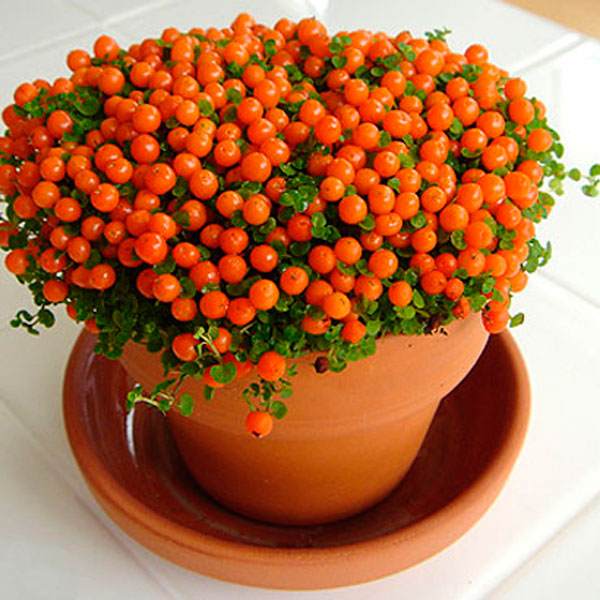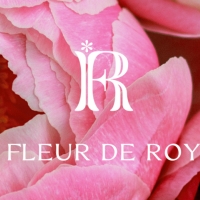Pin-Cushion Plant, Coral Bead Plant (Nertera granadensis)
Features
A very unusual plant that offers a nice change from leafy plants. The masses of tiny orange berries provide big color. The overall scale of the plant makes it easy to add a dash of brightness to small spaces. Pin-Cushion plants are native to many parts of the world, and form a dense groundcover in their natural habitats.
Uses
Very decorative on a small table or windowsill. Looks charming trailing over the edge of fanciful containers, such as an old tea cup, or tin. Can be placed outdoors in warm months or frost-free regions but protect from direct sunlight.
Plant Feed
Apply a balanced liquid fertilizer monthly during periods of active growth.
Watering
Allow soil to dry between thorough waterings. Water approximately once a week if plant is in a bright location.
Soil
Potting mix designed for cacti and succulents.
Planting Instructions
Start with a good quality, commercial potting soil. These are usually lighter in weight than topsoil, sterile and pest-free. Many are available with a mild starter fertilizer in the mix.
Select a container with a drainage hole or be prepared to drill holes for drainage if there are none.
Prepare the container by filling with potting soil up to 2” (5cm) from the rim of the planter. Remove the plant from its pot.
Make a small hole in the soil slightly larger than the root ball either by hand or using a trowel. Insert the plant into the hole and press soil firmly around the roots and just covering the root ball. When all the plants are potted, water thoroughly to settle the soil and give plants a good start. Place plant in a reliably sunny location.
Repot every 2 years in the same container or in a container slightly larger than the diameter of the roots.
Watering Instructions
Prefers moist but well-drained soil. Check the soil moisture with your finger. If the top 2-4” (5-10cm) of soil is dry, or plants are wilted, it is time to water.
Apply water at the soil level if possible to avoid wetting the foliage. Water the entire soil area until water runs out the base of the pot. This indicates that the soil is thoroughly wet.
Fertilizing Instructions
Fertilizers are available in many forms: granulated, slow-release, liquid feeds, organic or synthetic. Determine which application method is best for the situation and select a product with a nutritional balance designed for foliage plants.
Too much fertilizer can damage plants so it’s important to follow the package directions to determine how much, and how often, to feed plants.
Slow-release fertilizers are an especially good, care-free choice for container plants. A single application can often provide plants with the proper level of nutrition all season long.
Pruning Instructions
Most container plants can be pruned freely to maintain the desired size and shape. Keeping the foliage trimmed also keeps the plants looking neat and tidy, encourages the plant to develop more side-shoots and flowers, and reduces the demand for the plant to develop a larger root system. This is important since the roots are in a confined space.
Plant Details
| Available Colors: | Grown for orange berries |
| Bloom Time: | Spring |
| Height Range: | 1-2" (3-5cm) |
| Space Range: | 8-10" (20-25cm) |
| Temperature Range: | 50° to 80°F (10° to 27°C) |
| Plant Light: | Medium Light |
| Companion Plants: | Fleurette Mum, Variegated Ivy, Miniature Orchids |
Availability
- Jan
- Feb
- Mar
- Apr
- May
- Jun
- Jul
- Aug
- Sep
- Oct
- Nov
- Dec



